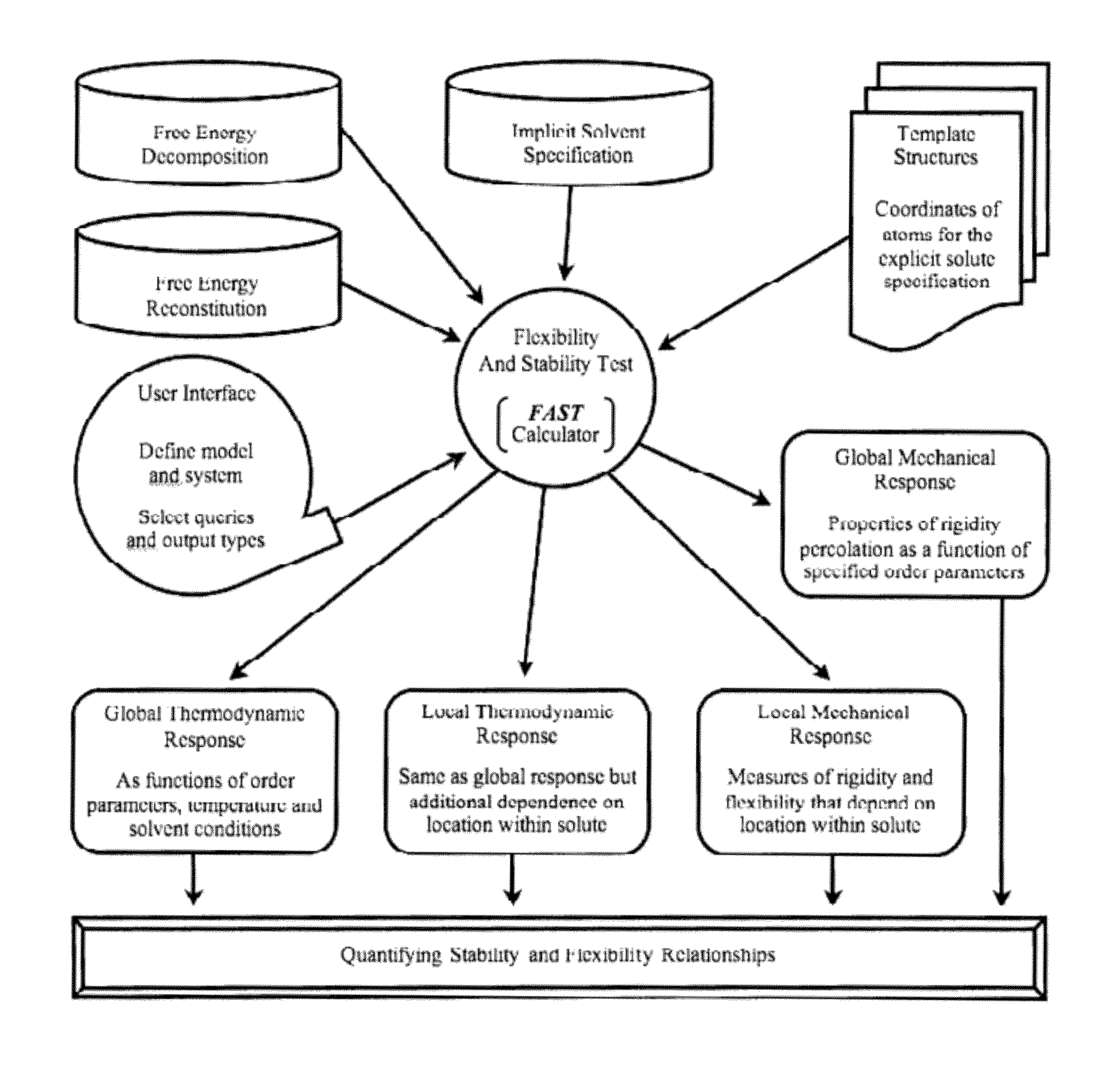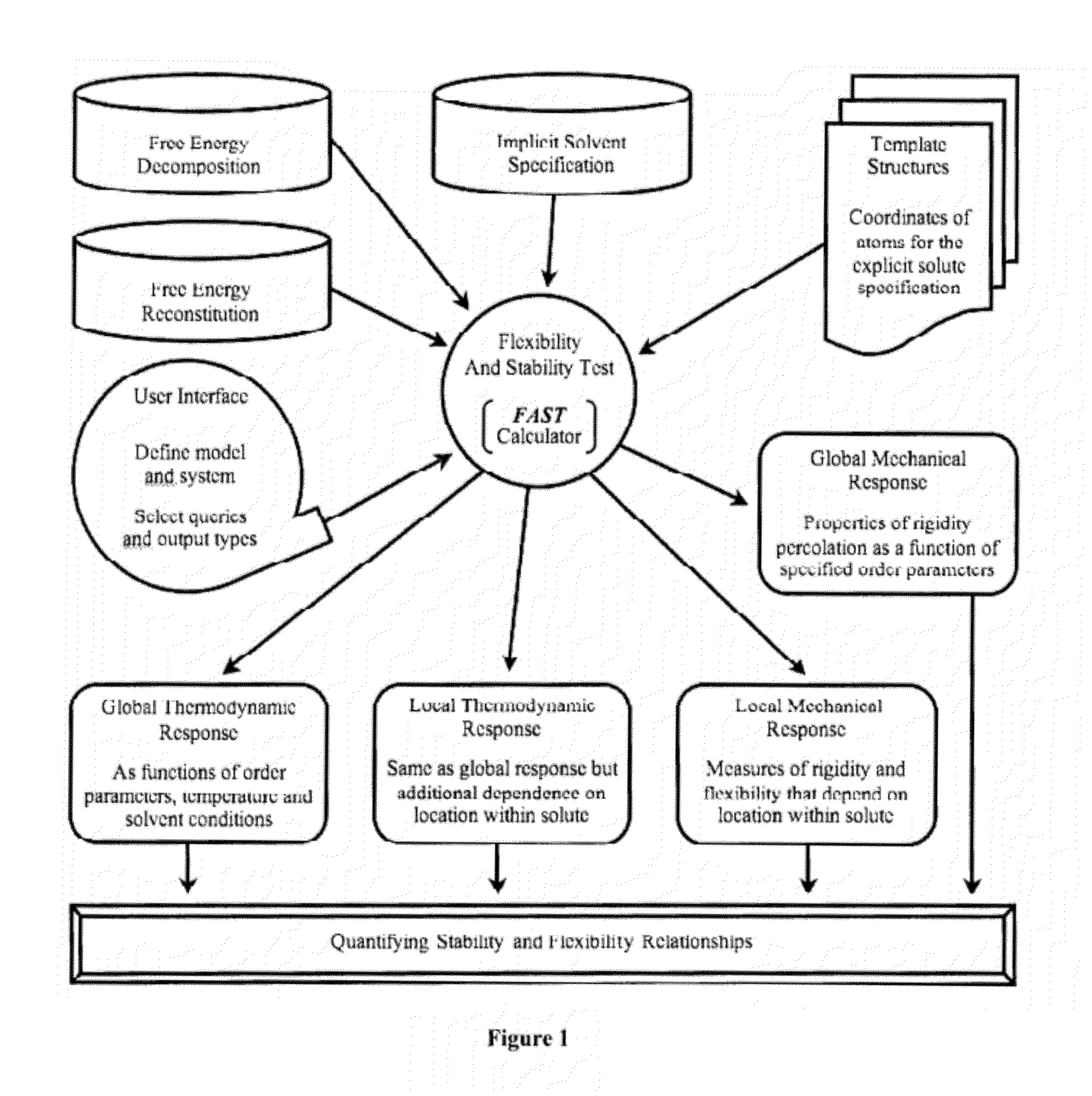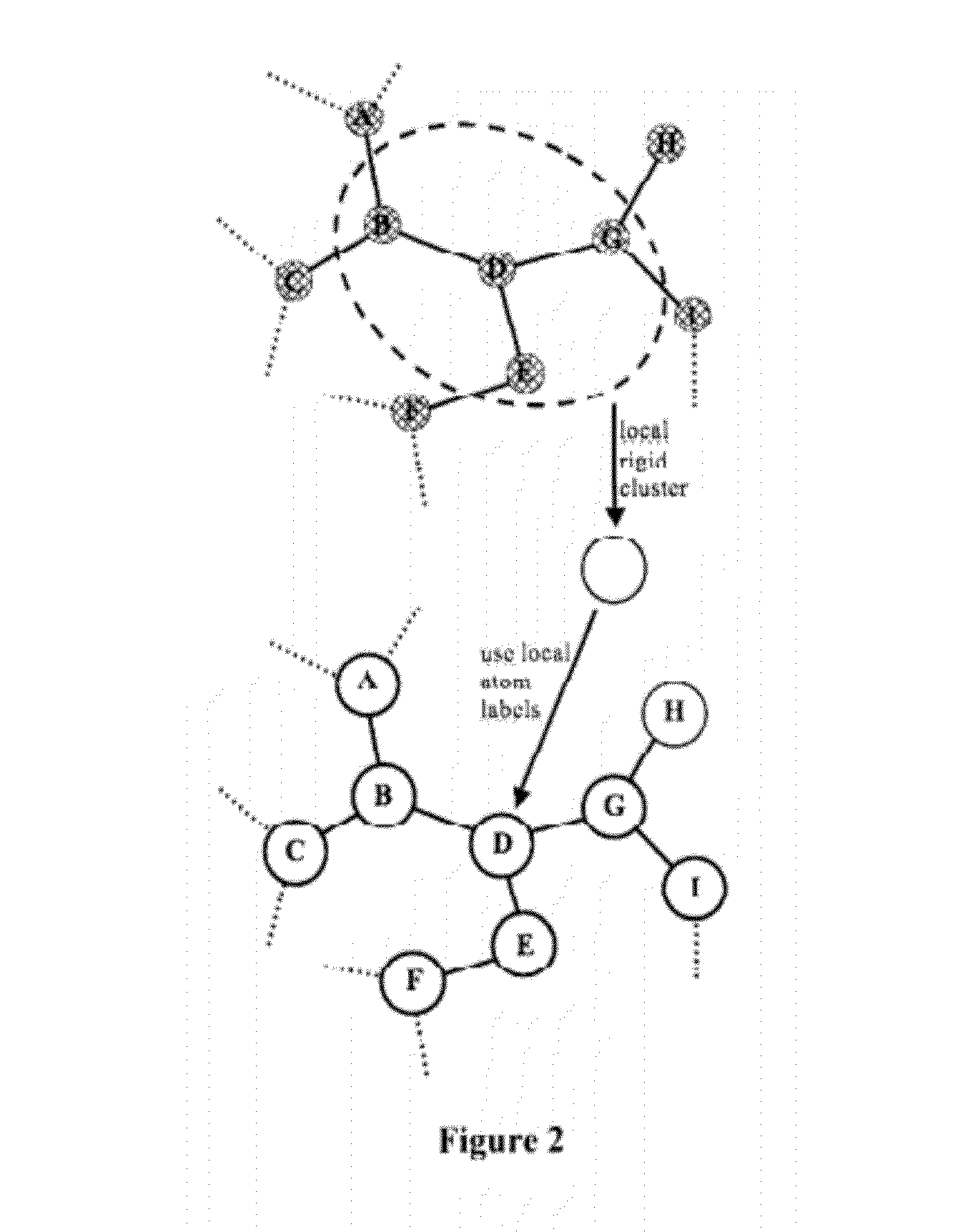Computer implemented system for quantifying stability and flexibility relationships in macromolecules
a technology of stability and flexibility relationships and computer implementation, which is applied in the field of computer implementation system for quantifying stability and flexibility relationships in macromolecules, to achieve the effect of increasing the number of redundant constraints and increasing energy
- Summary
- Abstract
- Description
- Claims
- Application Information
AI Technical Summary
Benefits of technology
Problems solved by technology
Method used
Image
Examples
example representations
[0271]In practice, the general representation for a conformation interaction described above will not be used fully for a given interaction type. In some cases, the energy or entropy parameters need not be explicitly specified because they play a passive role. For example, the conformation interaction shown in FIG. 8 represents atomic structure of a chemical group as a rigid body when it is exposed to solvent in a clathrate environment. In the preferred embodiment, all internal DOF are eliminated from the chemical group using a full allotment of passive constraints whenever solvent controls atomic motion.
[0272]FIG. 8 is an illustration of a passive conformation interaction that makes a chemical constituent rigid when it is exposed to a clathrate solvent environment. Circles represent rigid bodies in the body-bar network, and there are enough passive bars placed between the bodies to eliminate all internal DOF within the structure.
[0273]The general representation for conformation int...
PUM
 Login to View More
Login to View More Abstract
Description
Claims
Application Information
 Login to View More
Login to View More - R&D
- Intellectual Property
- Life Sciences
- Materials
- Tech Scout
- Unparalleled Data Quality
- Higher Quality Content
- 60% Fewer Hallucinations
Browse by: Latest US Patents, China's latest patents, Technical Efficacy Thesaurus, Application Domain, Technology Topic, Popular Technical Reports.
© 2025 PatSnap. All rights reserved.Legal|Privacy policy|Modern Slavery Act Transparency Statement|Sitemap|About US| Contact US: help@patsnap.com



